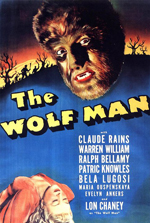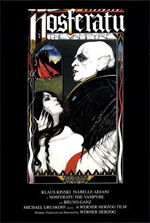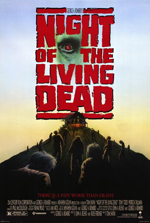American Studies' Thomas Doherty shares his favorite scary movies
He explains why horror films, despite the stress of watching them, keep us coming back for more

Thomas Doherty
With Halloween here, BrandeisNOW thought it was a perfect time to talk with American Studies professor Thomas Doherty, who specializes in Hollywood cinema, about the enduring allure of horror films.
BrandeisNOW: The creepy flick “Paranormal Activity” was at the top of the box office last weekend. Does this film bring something new to the table that audiences haven’t seen before?
Thomas Doherty: I think the obvious comparison in this case is “The Blair Witch Project.” In an age in which horror relies so much on elaborate special effects, CGI, and, sometimes, extreme gruesomeness, these films are minimalist and they have sort of a reality to them that accentuates the horror much more than some of the more elaborate films, like the “Saw,” “Halloween,” or “Nightmare on Elm Street” series, that really go for a much different kind of supernatural, over-the-top aesthetic.
BrandeisNOW: Is that what it takes for a horror film to be successful given public taste today?
TD: You need something that taps both into the traditional fears that audiences have always had, that have been perennial, whether you’re talking about film or literature or plays or cavemen telling stories around the campfire. Horror’s a way that we address our deepest subconscious fears- death and mutilation- and desires, usually of the sexual kind. All the stuff we repress,  but that, as Freud reminds us, return in another form. And oftentimes a horror film will sort of express those fears manifested in a monster. Frankenstein both expresses your fear of death and your fear of being killed. Or the Wolf Man expresses your sense of irrationality and the sexual frenzy—it’s not for nothing he freaks out every month and grows hair in strange places. Or, of course, the current monster flavor of the month, vampires, which represent both death, blood, and sex. All these figures are incarnations of these fears, and we go to literature, plays or cinema to see these things expressed and acted out.
but that, as Freud reminds us, return in another form. And oftentimes a horror film will sort of express those fears manifested in a monster. Frankenstein both expresses your fear of death and your fear of being killed. Or the Wolf Man expresses your sense of irrationality and the sexual frenzy—it’s not for nothing he freaks out every month and grows hair in strange places. Or, of course, the current monster flavor of the month, vampires, which represent both death, blood, and sex. All these figures are incarnations of these fears, and we go to literature, plays or cinema to see these things expressed and acted out.
BrandeisNOW: Why do we want to go to the movies to be scared?
TD: I don’t want to get too literary on you, but now you’re going back to Aristotle. Because Aristotle is the first literary critic who confronted this problem, which is: why would people pay ten bucks to be scared? Or to see a tragedy like Oedipus? That would be the Greek version of the horror film – the guy marries his mother, kills his father, and then pokes his eyes out. That’s pretty horrifying. The answer Aristotle comes up with is that horror’s the stage in which we can look at that spectacle and sort of purge our own terrors. Aristotle said that we respond with “pity and terror.” Oh, that poor girl, she’s being pursued by the maniac with a knife and you think oh, that could be me. It’s my mortality too. It sort of speaks to the best in you because if you’re not a sociopath, you’re identifying with the victim.
BrandeisNOW: What are some of your favorite horror films?
 TD: I think everyone loves the great German Expressionist films. I think the F.W. Murnau film “Nosferatu” is still very powerful. The Universal Pictures horror films from Hollywood in the early 1930s would be the next great wave, films like “Frankenstein” and “The Wolf Man” and “The Mummy.” A lot of people say both of those traditions– both German expressionism and the Universal horror film- come out of World War I and the repressed fears people had of the battlefield and the mutilated bodies of soldiers coming back. Something like “Phantom of the Opera,” where you have a disfigured man, taps right into World War I. And then, of course, the next great wave would be the Jacques Tourneur-Val Lewton kind of B-unit films, like “Cat People.” And our friend, Alfred Hitchcock, who makes more thrillers than actual authentic horror. I’m also a fan of the original “Night of the Living Dead,” which still remains startlingly terrifying before zombies became figures of fun and jokes. “Silence of the Lambs” is also particularly terrifying because the monster is a human being.
TD: I think everyone loves the great German Expressionist films. I think the F.W. Murnau film “Nosferatu” is still very powerful. The Universal Pictures horror films from Hollywood in the early 1930s would be the next great wave, films like “Frankenstein” and “The Wolf Man” and “The Mummy.” A lot of people say both of those traditions– both German expressionism and the Universal horror film- come out of World War I and the repressed fears people had of the battlefield and the mutilated bodies of soldiers coming back. Something like “Phantom of the Opera,” where you have a disfigured man, taps right into World War I. And then, of course, the next great wave would be the Jacques Tourneur-Val Lewton kind of B-unit films, like “Cat People.” And our friend, Alfred Hitchcock, who makes more thrillers than actual authentic horror. I’m also a fan of the original “Night of the Living Dead,” which still remains startlingly terrifying before zombies became figures of fun and jokes. “Silence of the Lambs” is also particularly terrifying because the monster is a human being.
BrandeisNOW: Do you still get scared when you see horror films?
TD: Oh, jeez, not as much as I used to- I’m pretty jaded now. Although I do get spooked at romantic comedies. Those are terrifying in some ways. Scared? Maybe I’m creeped out periodically rather than scared. Of course, guys never want to confess to being scared at a horror film. And that reminds me of the other thing you really need to mention about horror films; they’re great date movies. Both the male and the female, when they go to a horror film, are craving a kind of intimacy because they’re going to bond during the movie. And if the guy’s lucky, the girl’s going to put her head on his shoulder at some point during the film. Horror remains the most popular genre for teenagers. It’s still the one surefire genre that will attract teenagers, which tells you why this genre is so intimately concerned with death and mortality and sex.
BrandeisNOW: If readers are going to see one movie on Halloween, whether it’s one that is out in theaters right now, or available on DVD, what would it be?
 TD: My pick would be George Romero’s “Night of the Living Dead.” It is authentically, unrelentingly terrifying and realistic, and I don’t want to give away the ending, but there’s no kind of uplift or escape. The spectacle of your family coming back and wanting to eat you is not particularly tasteful. But it’s also about how you watch the horror film, and I think that’s something that this generation may experience differently. I was talking to a couple of my students who already downloaded Paranormal Activity on a peer-to-peer Web site. These things play much better uninterrupted in a public theater and it’s why Alfred Hitchcock, when he released Psycho to the theaters, wouldn’t let anybody in after the film had started- the theater doors were closed, so everybody had to see it in one intense sitting. I think the modern way of spectatorship doesn’t allow the horror film to accumulate its power because kids are on their instant messaging and they’re watching the streaming video, and they’re kind of missing some of the authentic power of those films, which is to be in a darkened space for 100 minutes with a group of people whose tension you’re feeling as well. If you’re interested in looking at a horror film like “Paranormal Activity,” it’s worth your 10 bucks to see it with your friends.
TD: My pick would be George Romero’s “Night of the Living Dead.” It is authentically, unrelentingly terrifying and realistic, and I don’t want to give away the ending, but there’s no kind of uplift or escape. The spectacle of your family coming back and wanting to eat you is not particularly tasteful. But it’s also about how you watch the horror film, and I think that’s something that this generation may experience differently. I was talking to a couple of my students who already downloaded Paranormal Activity on a peer-to-peer Web site. These things play much better uninterrupted in a public theater and it’s why Alfred Hitchcock, when he released Psycho to the theaters, wouldn’t let anybody in after the film had started- the theater doors were closed, so everybody had to see it in one intense sitting. I think the modern way of spectatorship doesn’t allow the horror film to accumulate its power because kids are on their instant messaging and they’re watching the streaming video, and they’re kind of missing some of the authentic power of those films, which is to be in a darkened space for 100 minutes with a group of people whose tension you’re feeling as well. If you’re interested in looking at a horror film like “Paranormal Activity,” it’s worth your 10 bucks to see it with your friends.





